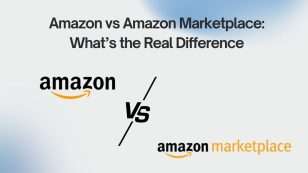In today’s fast-paced world of e-commerce, tracking your online orders has gone from a convenience to an expectation. As more consumers turn to digital shopping for everything from essentials to luxury goods, the demand for transparency and real-time updates has never been higher. Whether it’s a small handmade item or the latest tech gadget, buyers want to know exactly where their purchase is—and when it will arrive.
That’s where PayPal tracking numbers come into play. They serve as digital breadcrumbs, allowing customers to follow their packages every step of the way. But what many buyers don’t realize is that platforms like PayPal play a vital role in this process. When sellers input tracking information into PayPal, it not only keeps customers informed but also protects both parties through documented delivery confirmations.
In this article, we’ll walk you through how PayPal tracking numbers work, how customers can easily view them, and why they matter. Whether you’re a frequent shopper, a seller looking to boost trust, or someone new to online transactions, this guide will help you better understand how PayPal simplifies the order tracking experience. Let’s dive in.

What Is a PayPal Tracking Number?
A PayPal tracking number is a unique code that a seller provides to confirm shipment of an item purchased through PayPal. This number is generated by the shipping carrier—such as UPS, FedEx, USPS, DHL, or another logistics provider—and is used to track the journey of a package from the seller’s door to the buyer’s doorstep.
When a seller enters this tracking information into PayPal, it gets linked to the corresponding transaction. This means that both the seller and the buyer can view real-time updates on the shipment’s status directly through the PayPal platform. These updates typically include shipping confirmation, transit checkpoints, and final delivery.
For customers, a tracking number serves as a window into the shipping process. Instead of wondering when the item will arrive or having to email the seller for updates, buyers can simply check PayPal and see exactly where the package is. For sellers, it acts as proof that the item was sent and is on its way—an important factor in resolving disputes or avoiding chargebacks.
In short, a PayPal tracking number is more than just a string of digits—it’s a crucial tool that adds transparency, accountability, and peace of mind to the online shopping experience.
How Customers Can Track Their Orders via PayPal
For customers, tracking an order purchased through PayPal is a simple and reassuring process. Whether you’re eagerly awaiting a special gift or just keeping tabs on a routine purchase, PayPal allows you to monitor your package’s journey without leaving the platform.
Here’s how to track your order through PayPal:
Step 1: Log in to your PayPal account using your credentials.
Step 2: Navigate to the Activity tab at the top of the dashboard.
Step 3: Scroll through your list of recent transactions to find the purchase in question.
Step 4: Click on the transaction to open its details page.
Step 5: If the seller has added tracking information, you’ll see the carrier name and the tracking number displayed here. In many cases, this is also a clickable link that will take you directly to the carrier’s tracking page for real-time updates.
PayPal also sends an email notification to buyers when a tracking number is added to an order. This email typically includes the carrier name, tracking number, and a direct link for quick access.
If you don’t see a tracking number listed, don’t panic—there are a few possibilities. The seller may still be processing the order, or they may have shipped it but forgotten to update the transaction. In that case, your first step should be to contact the seller directly through PayPal’s message system.
Tracking your order through PayPal offers convenience and peace of mind. Instead of checking multiple websites or waiting for separate emails, all the information you need is stored in one secure place. It’s another way PayPal makes online shopping smoother and more transparent.
Common Issues and How to Handle Them
While PayPal’s tracking system is generally reliable, it’s not immune to hiccups. Occasionally, buyers may encounter issues that can be confusing or concerning. Here are the most common tracking problems—and what you can do to resolve them:
- Tracking Not Updated
Sometimes, tracking numbers appear inactive or don’t show any progress for several days. This is often due to delays in the shipping carrier’s system, particularly during weekends, holidays, or peak seasons. If your tracking hasn’t updated, wait 24–48 hours, then check again. Many carriers don’t scan packages immediately upon pickup. - Invalid Tracking Number
If the tracking number provided leads to an error or seems to be incorrect, double-check the format and the carrier used. Sometimes, sellers might accidentally input the wrong number or choose the wrong shipping provider from the PayPal dropdown. In this case, contact the seller directly and ask for clarification or correction. - No Tracking Info Added
If your PayPal order shows no tracking information at all, it could mean the seller hasn’t shipped the item yet or simply forgot to update the transaction. Start by reaching out to the seller through PayPal’s messaging system. If there’s no response within a reasonable timeframe, consider opening a dispute through PayPal’s Resolution Center. - Package Shows as Delivered, But You Didn’t Receive It
This can be especially frustrating. First, check your delivery address and ask neighbors or household members if they accepted the package. If not, contact the shipping carrier for GPS confirmation of delivery. If the issue persists, report it to the seller and escalate the case with PayPal if needed.
By knowing how to handle these scenarios, buyers can protect their purchases—and sellers can avoid unnecessary conflicts.
Best Practices for Sellers to Improve Customer Experience
Providing an outstanding customer experience doesn’t stop at checkout—it continues through shipping and delivery. As a seller, how you handle tracking and communication can make all the difference in earning repeat business and positive reviews. Here are some key best practices to follow when using PayPal to manage order fulfillment:
- Always Add Tracking Information Promptly
As soon as you ship an item, add the tracking number to the PayPal transaction. This simple step reassures buyers that their order is on the way and allows them to follow its progress without needing to reach out to you. - Use Trusted Shipping Carriers
Choose well-established and reliable carriers that offer accurate tracking and timely delivery. Not only does this minimize delays, but it also helps avoid disputes and complaints that can hurt your seller reputation. - Communicate Proactively
Keep your buyers informed if there are any delays, issues, or updates along the way. A quick message can go a long way in maintaining trust, especially if the shipping timeline changes unexpectedly. - Mark Orders as Shipped
Don’t forget to update the order status in PayPal. Marking an item as “shipped” ensures that PayPal triggers tracking updates and sends automatic notifications to the buyer.
These small, thoughtful actions show professionalism, reduce misunderstandings, and create a smoother post-sale experience that keeps customers coming back.
Final Thoughts
In the world of online commerce, trust is everything—and transparency is what builds it. PayPal’s tracking system is a key part of that trust, offering buyers peace of mind and giving sellers the tools they need to prove fulfillment and stay protected.
For customers, being able to track a purchase directly through PayPal removes guesswork and boosts confidence in the seller. For sellers, providing tracking info not only improves customer satisfaction but also strengthens their credibility and support in case of disputes.
Whether you’re buying or selling, actively using PayPal’s tracking feature is a simple step that leads to better communication, smoother transactions, and a more professional online experience. In the end, transparency isn’t just good service—it’s good business.
![]()










